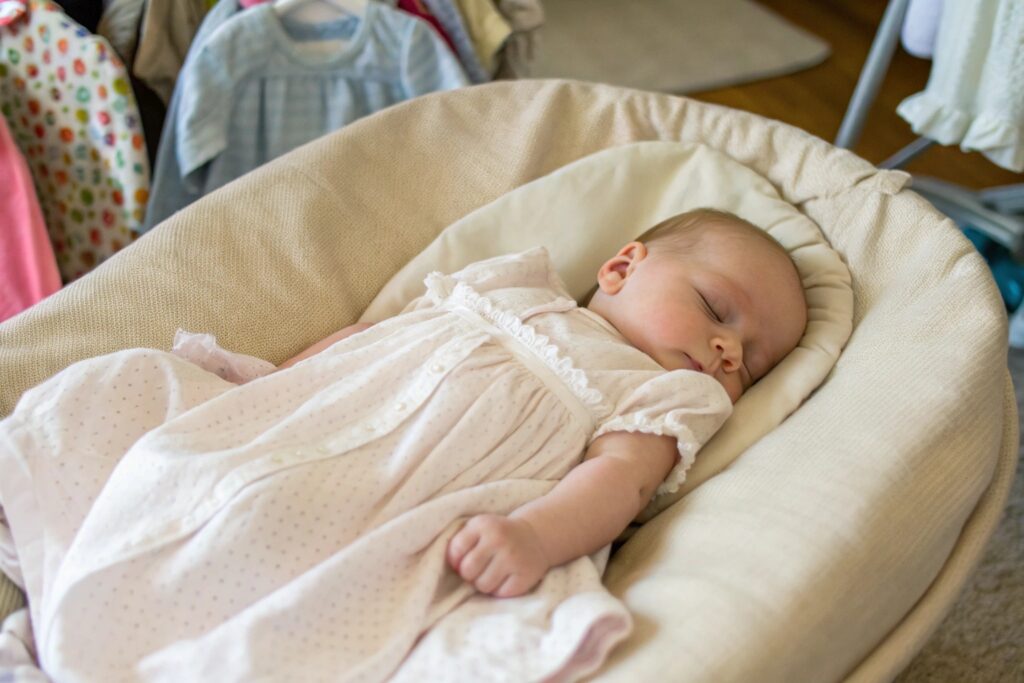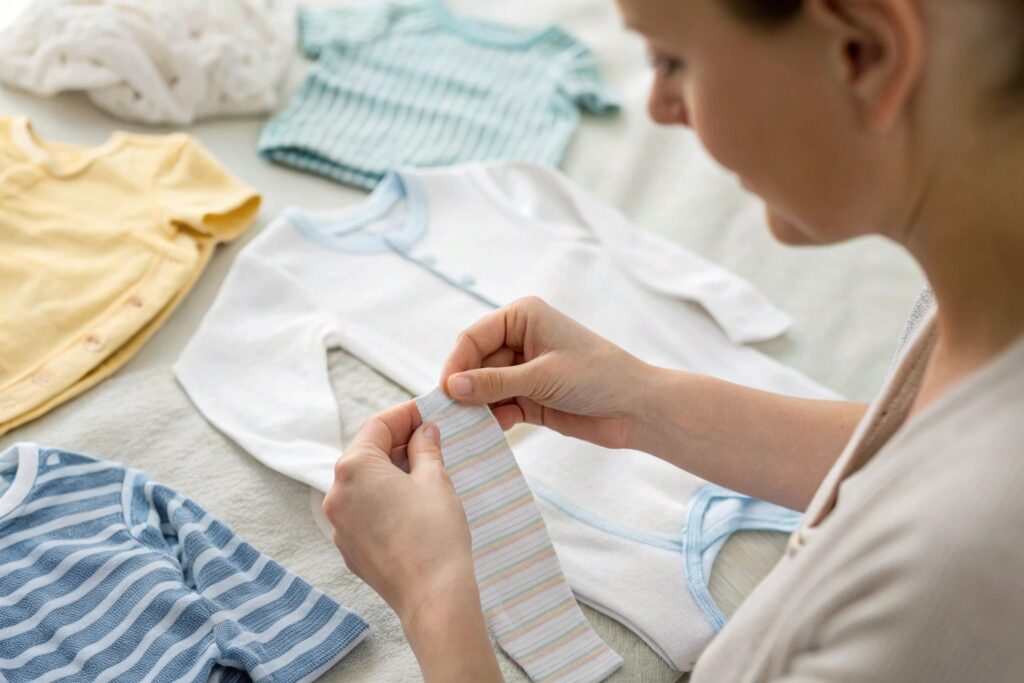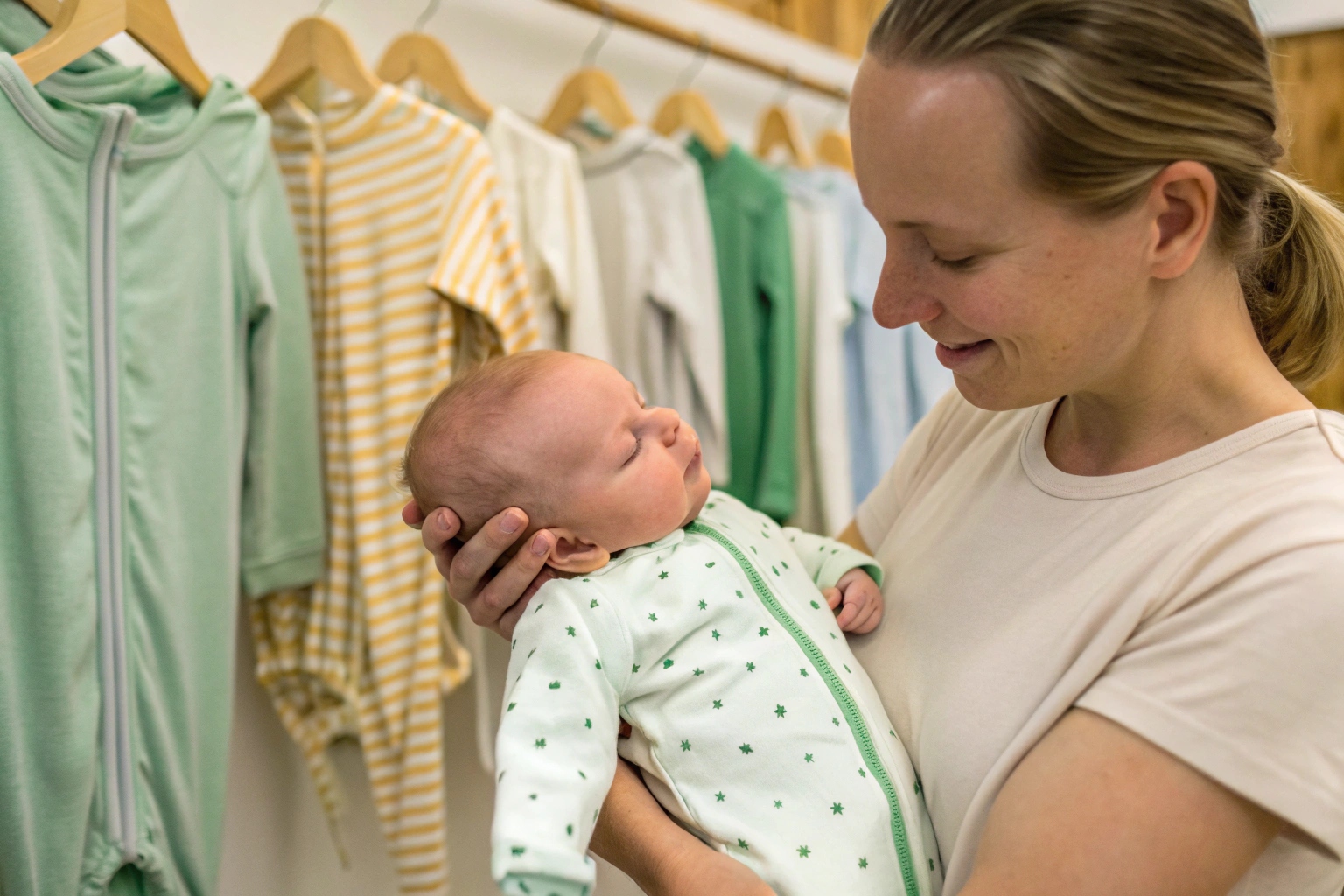In today’s world of synthetic blends and fast fashion, many parents are turning back to basics—natural fibre clothing for kids that’s safe, breathable, and gentle on growing skin.
Natural fibre children’s clothing is made from plant- or animal-based materials like cotton, bamboo, linen, and wool. These fabrics are naturally breathable, non-toxic, and ideal for babies and children with sensitive skin.
Let’s explore why natural fibres are the foundation of healthy, comfortable, and sustainable kidswear.
What Are the Most Common Natural Fibres Used in Kidswear?
Not all fabrics are created equal—especially when it comes to baby and toddler clothing.
The most common natural fibres in children’s wear include cotton, bamboo, linen, and wool—each offering unique texture, softness, and temperature control.

Popular natural fibres in kids' clothing:
| Fibre Type | Source | Key Characteristics |
|---|---|---|
| Cotton | Cotton plant | Soft, breathable, hypoallergenic |
| Organic Cotton | Cotton plant (non-GMO, pesticide-free) | Skin-safe + eco-conscious |
| Bamboo Viscose | Bamboo grass | Silky, antibacterial, thermoregulating |
| Linen | Flax plant | Durable, airy, moisture-wicking |
| Wool | Sheep | Insulating, natural temperature regulator |
These fabrics are often used in onesies, pajamas, swaddles, summer sets, and outerwear—depending on the season and function.
Benefits of Natural Fibre Clothing for Children’s Skin?
Babies and children have more delicate skin, which is why fabric choice can affect their comfort, health, and sleep.
Natural fibres are breathable, absorbent, and low-irritation—making them ideal for children with eczema, allergies, or general skin sensitivity.

Skin-friendly advantages of natural fibre clothing:
- Free from synthetic chemicals (especially when certified)
- Better airflow—reduces overheating and sweating
- Lower allergenic risk—no petrochemicals or plastic fibres
- Soft to the touch—ideal for long wear and sleep
- Moisture-absorbent—keeps skin dry and reduces irritation
| Fabric Issue | Natural Fibre Solution |
|---|---|
| Redness or rash | Use untreated organic cotton or bamboo |
| Heat rash or sweat | Try linen or lightweight cotton gauze |
| Discomfort while sleeping | Use natural fibre sleepwear with minimal seams |
Parents report better sleep, fewer rashes, and more comfort with natural vs. synthetic garments—especially for newborns.
How to Identify 100% Natural vs. Blended Fabrics?
A label that says “cotton blend” doesn’t mean you’re getting the full benefit of a natural fibre.
To ensure your child’s clothing is truly made from natural materials, learn how to read fibre content labels and identify certifications.

Key tips for identifying natural fabrics:
- Check the label: Look for “100% cotton,” “100% bamboo viscose,” or “100% linen”
- Avoid blends like: “Cotton/polyester,” “viscose/nylon,” or “spandex-mixed”
- Natural fibre fabrics feel: Soft, breathable, slightly textured or matte
- Burn test (for manufacturers): Natural fibres turn to ash, synthetics melt into plastic
- Look for certifications: OEKO-TEX®, GOTS, USDA Organic for true purity
| Label Example | Natural or Not? |
|---|---|
| “100% Organic Cotton” | ✅ Yes – pure and chemical-free |
| “60% Cotton, 40% Polyester” | ❌ No – contains synthetic fibre |
| “100% Bamboo Viscose” | ✅ Yes – plant-based and skin-safe |
| “Linen-Blend” | ⚠️ Check ratio – could contain polyester |
Understanding fibre labels helps parents shop smarter—and brands build trust through honest sourcing.
Why Parents Prefer Organic Cotton, Bamboo, and Linen?
Beyond softness, parents want clothing that reflects their values: health, simplicity, and sustainability.
Natural fibre fabrics like organic cotton, bamboo viscose, and linen tick all the boxes—they’re gentle on skin, gentle on the earth, and built to last through play, wash, and hand-me-down cycles.

Why these fibres are most popular:
- Organic Cotton: Grown without pesticides or GMOs, perfect for daily wear
- Bamboo Viscose: Naturally antimicrobial, silky soft, great for sleepers
- Linen: Airy and durable—ideal for hot climates or summerwear
| Parent Concern | Natural Fibre Solution |
|---|---|
| Avoiding toxins | GOTS-certified organic cotton or bamboo |
| Reducing skin irritation | Breathable, uncoated fabrics |
| Making eco-conscious choices | Renewable plant-based fibres |
| Getting long-term use | Linen and cotton last across siblings |
Natural fibre kidswear supports not just comfort—but conscious parenting.
Conclusion
Children’s natural fibre clothing is about more than softness. It’s about safety, sustainability, and mindful design. From organic cotton onesies to bamboo pajamas and breezy linen sets, natural fibres offer unmatched comfort and peace of mind. For growing skin and growing values, it’s the natural choice.










